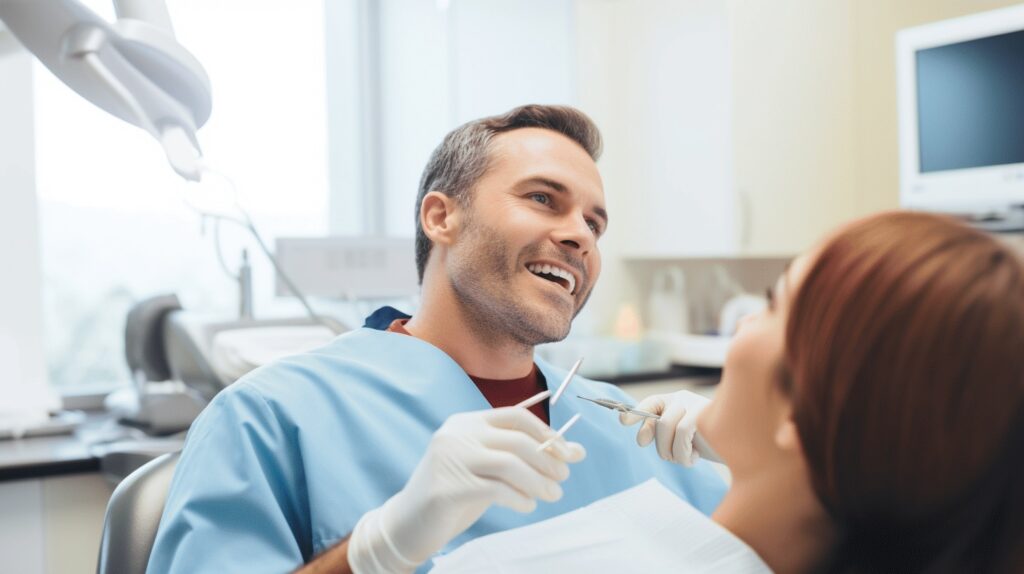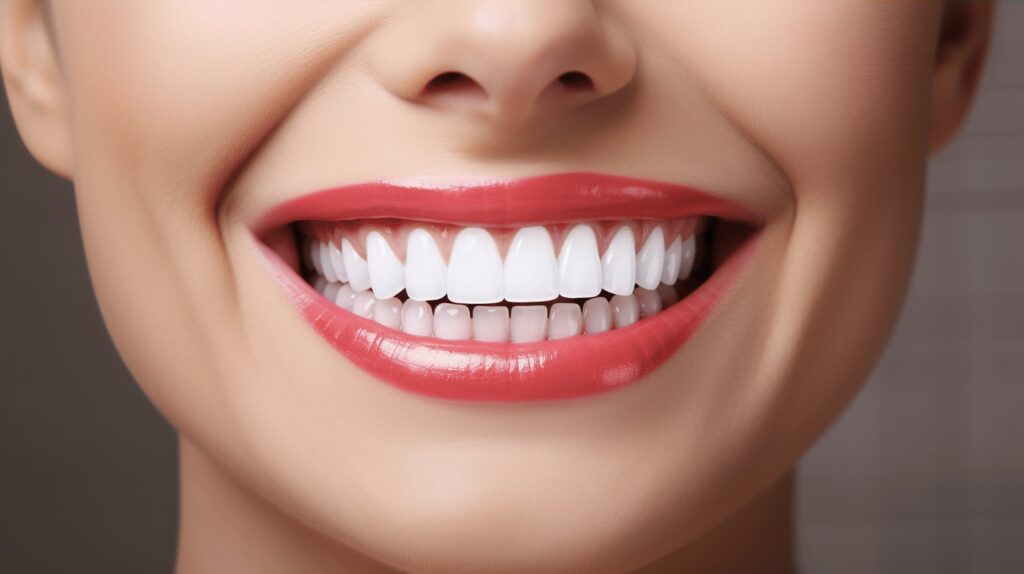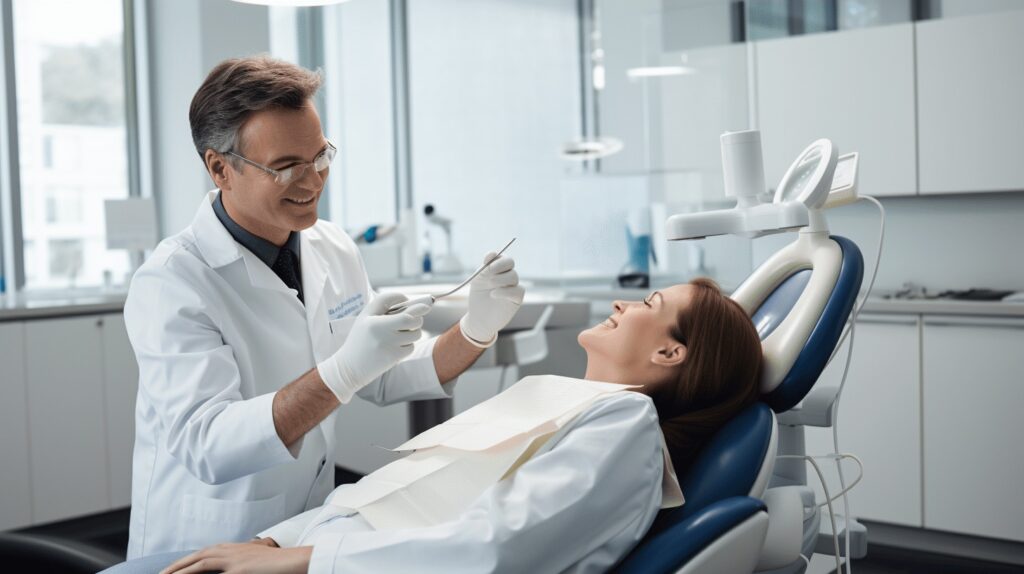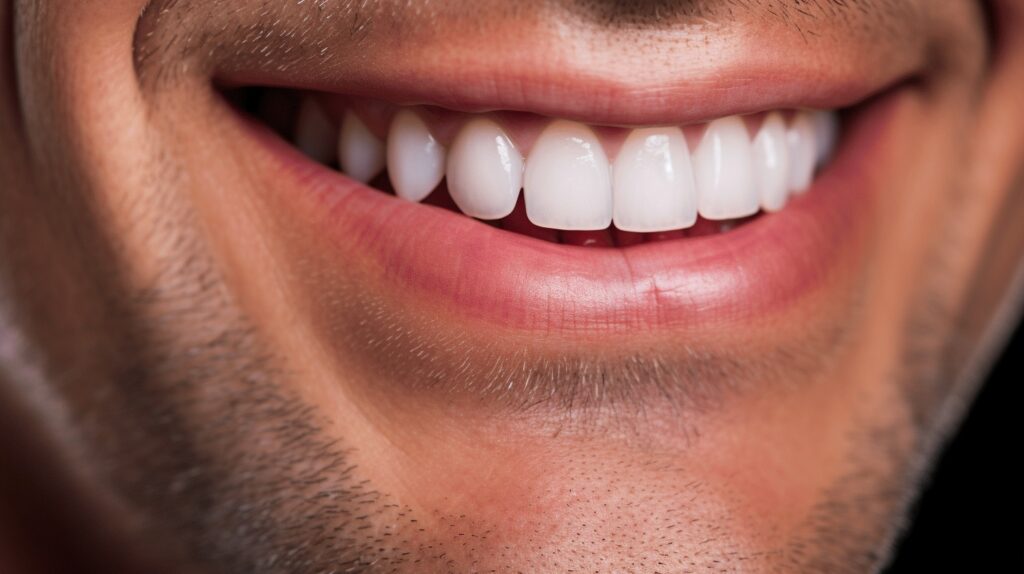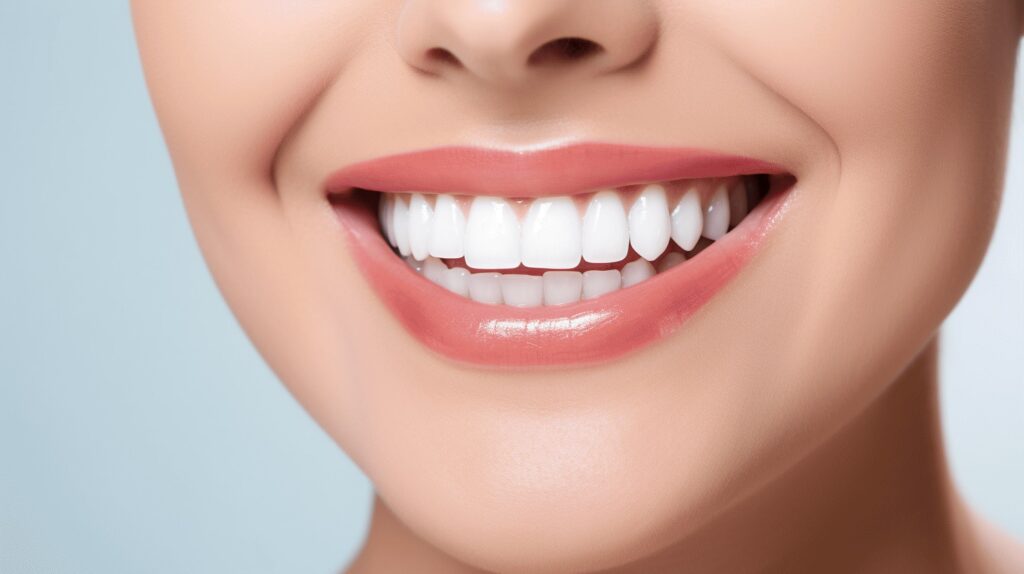Welcome to a world where every smile is a symbol of confidence and great health.
In this enlightening journey of ‘Achieving Optimal Oral Health’, we will explore the prevailing global oral health situation, the impact oral health has on our daily lives, particularly in education and productivity.
Moreover, we’ll take a closer look into the state of oral health in the United States, who the primary oral care providers are, and the trends we’re seeing.
Also, to maintain that gleaming smile, we’ll share some fundamental preventative dentistry practices.
So let’s dive right in, because a healthy mouth is a gateway to a healthy you! 🦷
Table of Contents
Global Oral Health Statistics
Dental health is more than just a bright smile. Our oral health can hint at our overall health and even act as a mirror to potential systemic diseases.
The Global Oral Health Status Report (2022) estimates that nearly 3.5 billion people around the world are affected by oral health issues.
Let’s take a deeper dive into some startling facts and statistics regarding oral health on a global scale.
Prevalence of Oral Diseases 🌍
Oral diseases are common all over the globe, from cavities to oral cancer.
In fact, statistics state that:
- Roughly 3.5 billion people worldwide are affected by oral diseases
- Gum diseases such as Periodontal disease, ranging from mild (gingivitis) to severe (Periodontitis), are native to the high-stress lifestyle of our century
- An alarming 13.2% of children aged 5-19 years have untreated dental caries. Frighteningly, these often lead to much more severe oral health issues in adulthood if not treated
These are just a few of the myriad ways oral health issues affect people globally on a daily basis.
The communal onset of these conditions brings a dent in individual lives and the healthcare sector at large.
Oral Health and Age 🧓
Take a look at age statistics when it comes to oral wellbeing and you will notice a clear escalation.
Adult teeth, also known as permanent teeth, aren’t as permanent as we’d like to believe:
- Nearly 90% of adults aged 20 to 64 years are affected by tooth decay
- The prevalence of gum disease jumps to almost half (!) of adults aged 45 to 64 years
Evidently, there’s an uptick in the prevalence of oral health issues as we age. These numbers underline the importance of staying proactive about our oral health from early on in life.
Regular check-ups, a balanced diet, and good oral hygiene habits can certainly make a significant difference.
Our oral health forms a part of the bigger health puzzle 🧩
Regular oral health check-ups can prevent long term problems, enhancing not only our oral health but our overall health as well. Dental issues may be prevalent, but they’re not unbeatable.
So, let’s point our brushes and floss towards ensuring our mouths are as healthy as they can be! 💪
Impact on Education and Productivity
If you’ve ever found yourself in the middle of a workday or school day derailed by a throbbing toothache, you’re certainly not alone.
We all know how distracting and painful dental issues can be. These problems have a far-reaching, intrinsic impact not only on our personal lives but also on our education and productivity levels.
You see, an agonizing toothache does not respect the ticking clock, important deadlines, or those ever-impending exams!
To give you a sense of the magnitude – on average, 34 million school hours are lost each year due to emergency dental care. Yes, you read that right — 34 million!
That’s a significant amount of time which could’ve been spent learning algebra or practicing musical instruments.
This figure can affect us all, from students missing crucial lessons to employees forfeiting productive hours. A simple dental emergency, such as a toothache or a chipped tooth, can basically disrupt an entire day’s schedule.
Here’s a quick breakdown of how dental emergencies impact our lives:
- Educational Loss:
Students often miss important lessons and practical sessions due to unanticipated dental visits. This can lead to knowledge gaps, making it tougher for them to keep up with the curriculum. - Productivity Reduction:
For workers, dental problems can negatively affect their workflow, hence reducing overall productivity levels. The constant discomfort can also impact work quality. - Financial Blow:
Dental emergencies demand immediate attention, and such unplanned visits are usually quite expensive. This leads to a potential financial strain, contributing further to stress and distraction.
To minimize the potential disruption caused by dental emergencies, it’s vital to be aware of the common dental issues and how to handle them proactively.
A good reference is this Handling Dental Emergencies guide that provides helpful tips and tricks to manage these situations better.
Our quality of life, in the broadest sense, depends significantly on good dental health.
Simple steps like regular check-ups and maintaining good oral hygiene can go a long way in preventing these issues, thereby boosting overall productivity and enhancing educational experiences.
Together, let’s make each smile healthier and days more productive! 😊 ☀️ 📚
Prevalence of Oral Health Issues in the United States
Has it occurred to you just how crucial oral health is to your overall well-being?
Well, it’s high time we turn our attention to this often overlooked aspect of health, especially now that alarming statistics on oral health issues are rising steadily in the United States.
Across all age brackets, from the young ones in our population to our seasoned adults, oral health problems are a considerable concern.
As the figures stand:
- Around 15% of children and adolescents in the U.S. have oral health problems.
- More than 1 in 4 adults in the U.S. have untreated dental cavities.
- Nearly 80% of Americans will have at least one cavity before reaching 17.
Now, let’s dive into the specifics; you know, just to shed more light on this particular subject.
Children and Adolescents Oral Health
It’s an unfortunate reality, yet one that we must confront head-on.
The young, often vibrant members of our society, our children and adolescents, are grappling with oral health issues.
Can you picture this? About 15% of them (yes, we are talking about millions of our future leaders and innovators) are battling various dental problems.
This age bracket’s primary teeth concerns range from cavities, gum diseases, tooth loss, to even oral cancers in rare cases. Don’t even get us started on the profound effects of these problems on their self-esteem and overall happiness.
As adults, we need to be on the frontline in eliminating these alarming statistics. After all, a change in our future starts with rejuvenating the hope and health of our children and adolescents.
Adults’ Oral Health
Transcend the realm of the young, and you land into the world of adults, yet oral health problems are still rife.
It’s startling that over 25% of adults in the U.S. are walking around with untreated dental cavities. This silent epidemic affects their quality of life significantly and impacts their overall health.
To compound the matter, oral health problems in adults extend beyond untreated dental cavities. Many adults grapple with gum diseases, tooth loss, and oral cancer, to mention but a few.
Don’t you think it’s time we received this wake-up call and addressed oral health issues with the urgency they deserve?
We’re not just talking about brushing our teeth twice a day or visiting the dentist once a year. It’s about fostering a comprehensive oral health culture that includes diet, regular dental visits, comprehensive dental checks, and proper oral hygiene.
Let’s not wait until we fall into statistics; the change can start with us!
Oral Care Providers
As we strive to keep those pearly whites clean and healthy, who do we have to thank?
Our dedicated Oral Care Providers, that’s who. Did you know that across the round earth we all live on, there are just under 4 million oral care providers globally?
Yes, you read that right: 4 million! That’s a lot of dental drills and bibs, to say the least.
Let’s take a moment to appreciate these hardworking professionals who make our dental health their primary concern. Our Oral Care Providers are a boon to society, an indispensable part of our health system and their dedication to maintaining our smiles is worth more than just a nod of gratitude.
We’re not just talking about dentists here.
The term ‘oral care provider’ encompasses a diverse range of professionals including dental hygienists, oral surgeons, orthodontists, and even dental technicians.
Each of these essential roles contributes to a holistic approach to oral health care.
Here’s a snapshot of what these roles entail:
- Dentists: The superheroes of oral health, dentists diagnose and treat problems with a patient’s teeth, gums, and related parts of the mouth.
- Dental Hygienists: They provide preventive dental care and teach patients how to maintain good oral health.
- Oral Surgeons: Skilled in the art of jaw and mouth surgeries, they handle complex treatments from corrective jaw surgery to wisdom tooth removal.
- Orthodontists: They are the smile correctors, designing and applying braces and retainers to correct teeth alignment.
- Dental Technicians: These are the behind-the-scene stars who create dentures, crowns, bridges, and orthodontic appliances to improve patient’s physical appearance.
“Oral Care Providers are not just about instilling oral hygiene habits, they are partners in our journey to overall health. Show them some love!”
As you can see, Oral Care Providers play a crucial role in our lives. No matter who you are, where you are in the world, you’re in good hands with these professionals.
After all, there are just under 4 million of them out there, ready to keep our smiles shining bright.
So, in summary, our oral health matters. It’s not just about a captivating smile; it’s about overall health.
Our Oral Care Providers play a significant role in making society healthier, one mouth at a time. So remember to thank your dentist or hygienist the next time you visit, they’re part of the whopping 4 million oral care providers worldwide making a difference in our day-to-day lives.
And as always, happy brushing!
Future Actions and Oral Health Trends
The landscape of oral health is rapidly transforming, thanks to burgeoning technological advancements, novel treatment methodologies, and altered perceptions towards dental care.
These strides towards the future are not just reshaping the dental sector but are also massively impacting our individual approaches to maintain oral health.
Embedding the data alongside, let’s scan through some of the noteworthy trends molding the future actions and oral health habits among American adults.
Plans to Visit Dentist
Did you know that over 75% of American adults are planning to visit a dentist in the coming year?
😲 Astounding, isn’t it?
This surge is reflective of the increased awareness and importance being assigned to oral health by individuals today. It marks a significant departure from the erstwhile ways of approaching dental care, which conventionally kick-started primarily upon encountering an issue.
Today, preventive measures and an expanding eagerness to sustain oral hygiene dominate the thought process.
This pivot in the attitude denotes positive undercurrents about the future of oral health.
Rate of Dental Visits
An illuminating facet of the changing oral health narrative is the escalating rate of dental visits. In 2018, a staggering 65.7% of adults had sought dentistry services.
This leap, compared to previous years, underscores the renewed prioritizing of oral health.
People aren’t allowing fiscal constraints, apprehensions, or time limitations to hinder their dental check-ups. A lion’s share of this transformation is credited to dental practitioners who’ve worked ceaselessly to create environments that inspire comfort and trust!
Teeth Removal Due to Gum Disease
Though we are taking strides towards superior oral health, we still have grounds to cover.
Almost half the adults, precisely 45.8%, have had their permanent teeth removed due to gum diseases. It’s a hefty percentage, implying an urgent need for effective strategies to combat this widespread issue.
While dental issues like gum disease are deeply entrenched in many American adults, the rapid advancement in dental technologies and growing awareness are making effective treatment more accessible than ever.
In the final analysis, on the bright side, we all have within us the power and awareness to chart the future course of our oral health. Let’s opt for diligent care, regular check-ups and unshrinkable smiles!
Onwards to healthier teeth and brighter smiles! 😁
Preventive Dentistry Practices
When it comes to dental health, prevention is always better than cure.
A number of practices fall under preventive dentistry, and these habits not only ensure a dazzling smile, but they’re key for overall wellness.
From regular check-ups, to cleanings and right up to maintaining appropriate oral hygiene habits at home, let’s delve into these preventative dentistry practices in detail! 👄
Regular Dental Check-ups
Dentists often recommend a visit every six months, and there’s a great reason for it.
These regular check-ups include examinations of your gums, lips, tongue, and teeth.
The purpose is to catch any potential problems early on before they develop into major issues.
Benefits include:
- Lower risk of teeth and gum infections
- Early detection of oral health issues like gum disease
- Improved confidence by keeping your smile bright and healthy
Cleanings
In addition to regular check-ups, you should get your teeth professionally cleaned as recommended.
Professional cleaning goes deeper than what our top quality toothbrush or floss can manage, clearing out hard-to-reach areas effectively.
Oral Care at Home
Home care is equally crucial in preventive dentistry.
Some of the regular practices include:
- Brushing and Flossing: Essential for the removal of plaque and food particles from teeth surfaces and between teeth.
- Using Mouthwash: Helps to kill bacteria and freshen your breath.
- Eating Healthily and Avoiding Sugar: A diet full of nutritious foods can support healthy teeth and gums.
As the famous saying goes, “an apple a day keeps the doctor away”. Well, we think it doesn’t just apply to physicians – the dentists will give you a thumbs up too! 👍🍎
As much as these tips are incredibly beneficial, they are just indicators of the numerous preventative dentistry practices available to ensure optimal dental health.
We couldn’t cover it all here, so feel free to check out more invaluable information on Preventative Dentistry Techniques for a more comprehensive outlook.
Don’t forget, your smile is your best accessory! A little prevention today can go a long way in preserving that sparkling smile for many more years to come! 😄
Conclusion
In this journey towards achieving optimal oral health, we have skimmed through several compelling statistics and facts. From the staggering prevalence of oral diseases globally to their detrimental impact on education and productivity.
From nationwide issues in the U.S, particularly among children and adults to the role of oral care providers—this plethora of knowledge underlines the importance of proactive oral care.
Looking forward, it’s crucial to stay current with oral health trends, including visiting dentists regularly and implementing effective preventative practices.
Prevention is, after all, better than cure — especially when it deals with something as priceless as our smiles.💫
With that said, it’s also important to remember that the journey to optimal oral health is not a solo expedition.
Professional dental health care providers, like us here at Wilshire Smile Studio, stand by your side. Our experienced team, armed with cutting-edge technology, is dedicated to offering a wide range of dental services.
From preventative dentistry, dental implants, to cosmetic treatments, we’ve got you covered.
To conclude, your oral health regime plays a direct role in your overall wellbeing. Don’t delay, leap forward towards healthier, brighter smiles with us.
Reach out today by booking a free appointment or calling 323-DENTIST (323-336-8478) and step into the world of comprehensive, personalized, and affordable dental care.
After all, your smile is our reward!😊
Frequently Asked Questions
1. What is preventative dentistry?
Preventative dentistry refers to the practice of maintaining good oral health and preventing dental issues before they occur. It involves regular dental check-ups, proper oral hygiene, and lifestyle choices that promote oral health.
2. How often should I visit the dentist for preventative dental care?
It is generally recommended to visit the dentist for preventative dental care every six months. However, the frequency may vary depending on your oral health condition and the dentist’s recommendation.
3. What are some key preventative dentistry practices?
Key preventative dentistry practices include brushing teeth twice a day with fluoride toothpaste, flossing daily, eating a healthy diet low in sugary foods and drinks, avoiding tobacco use, and wearing mouthguards while playing sports.
4. Is professional teeth cleaning necessary for maintaining oral health?
Yes, professional teeth cleaning is essential for maintaining oral health. It involves the removal of plaque and tartar buildup that cannot be effectively removed by regular brushing and flossing. Regular teeth cleaning helps prevent gum disease, tooth decay, and other dental problems.
5. Can preventative dentistry practices help prevent cavities?
Yes, preventative dentistry practices such as regular dental check-ups, proper oral hygiene, and fluoride treatments can help prevent cavities. These practices help remove plaque and bacteria, strengthen tooth enamel, and maintain overall oral health.



